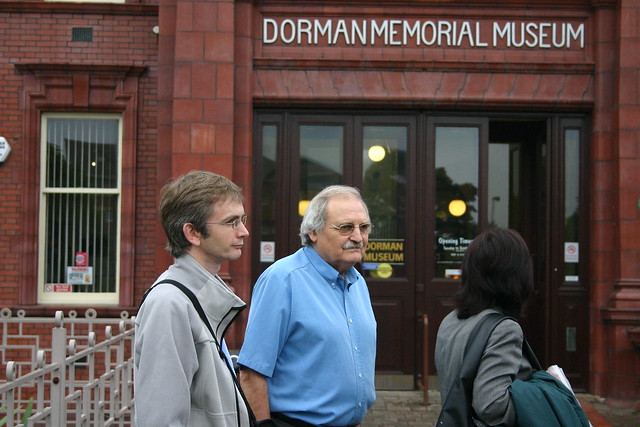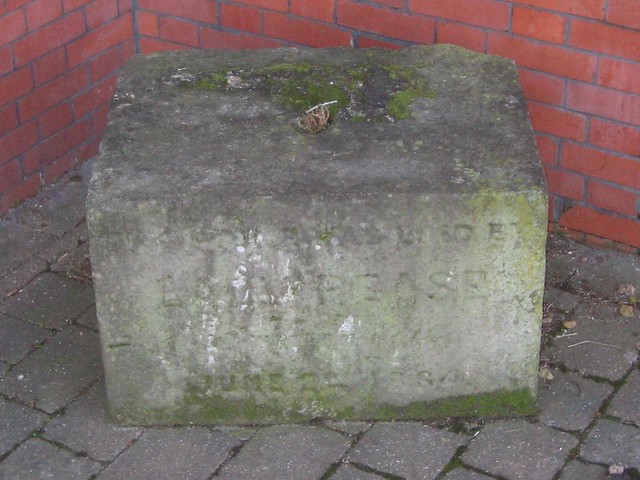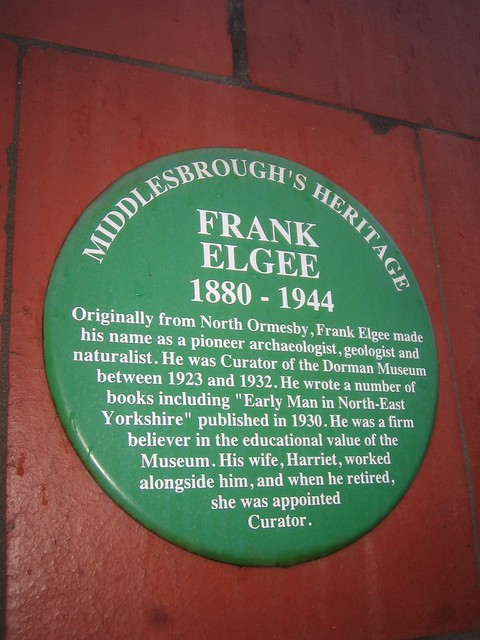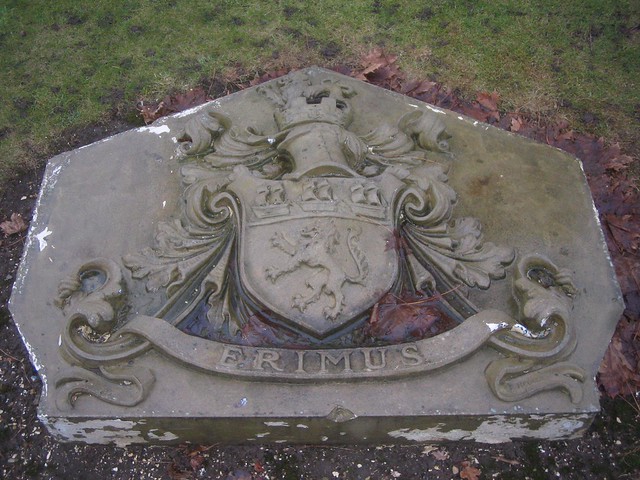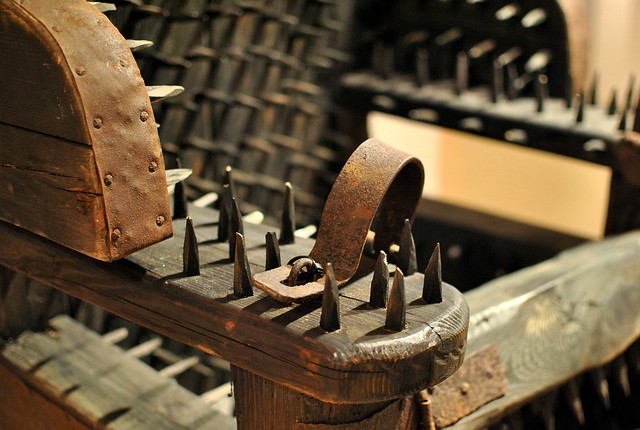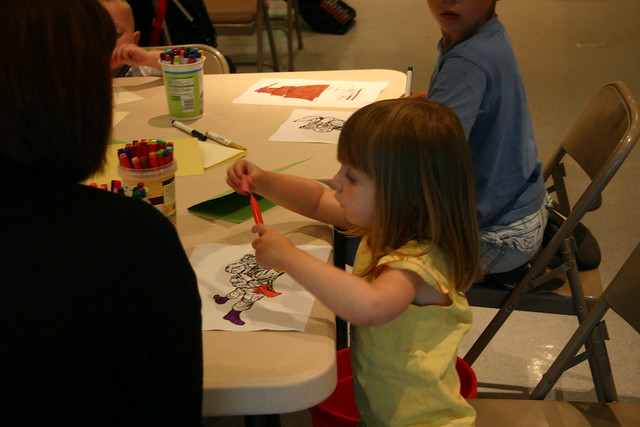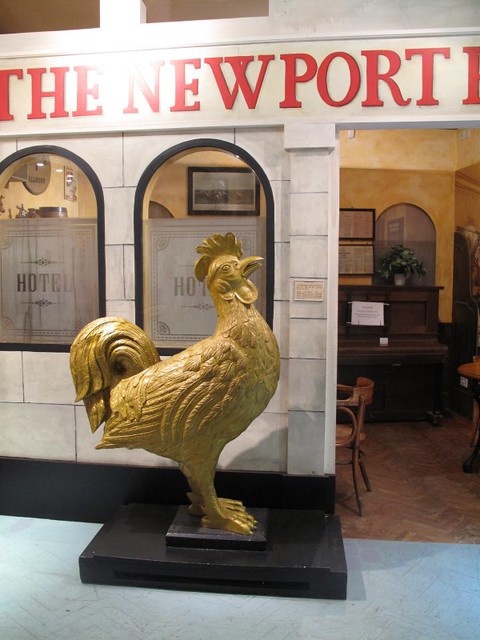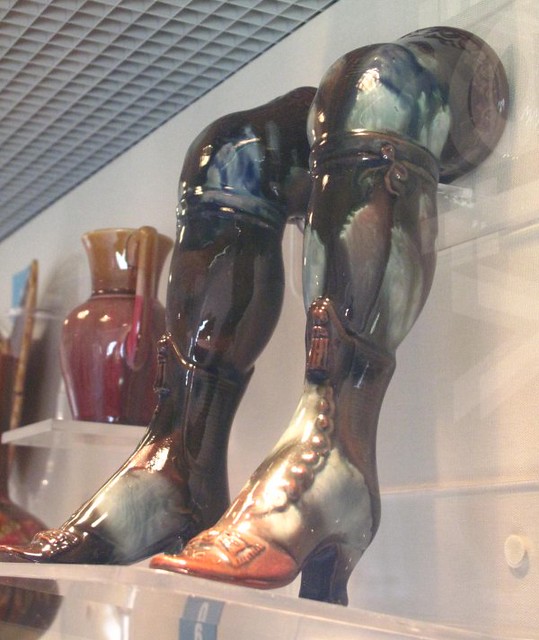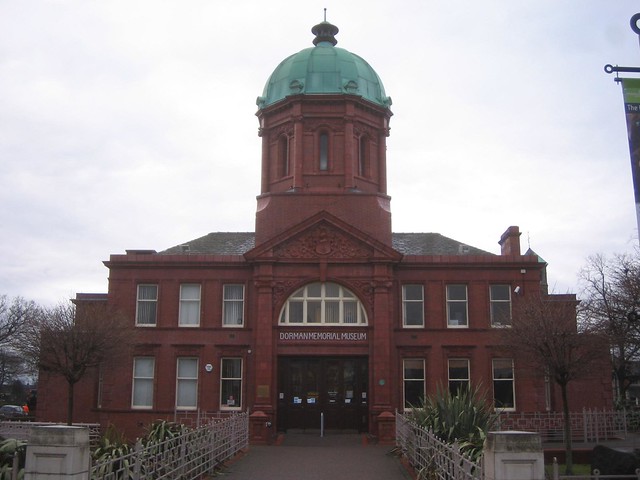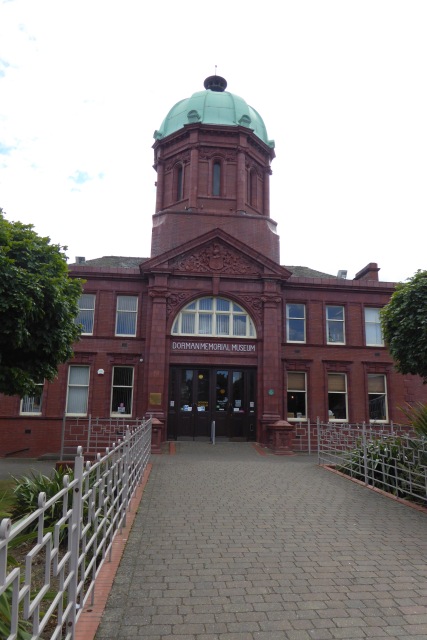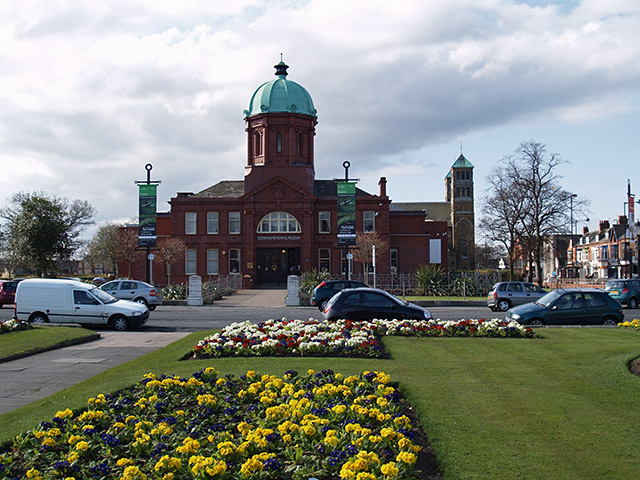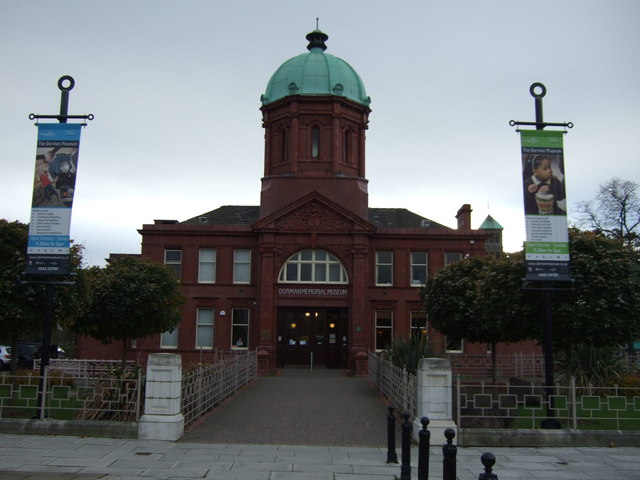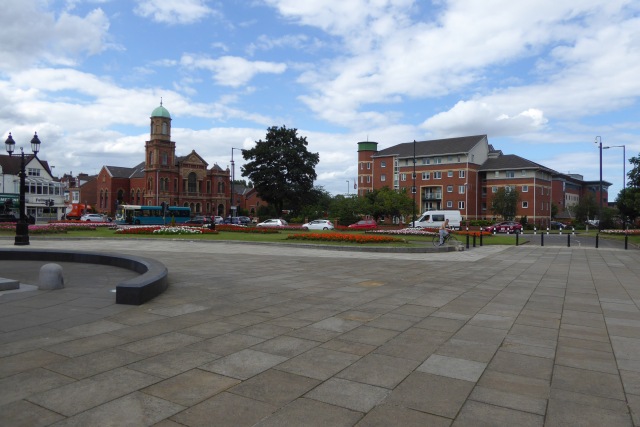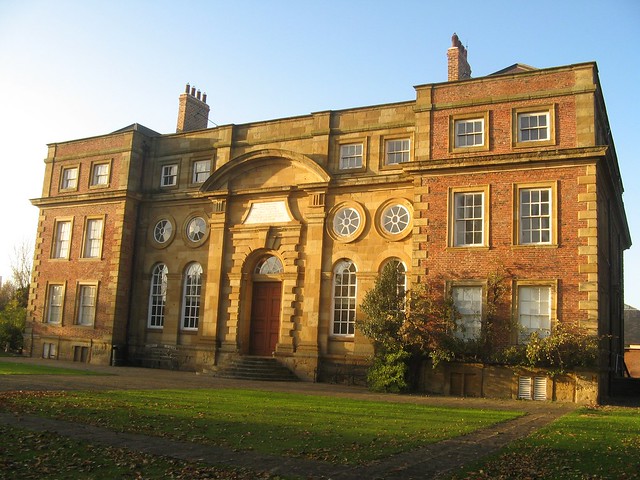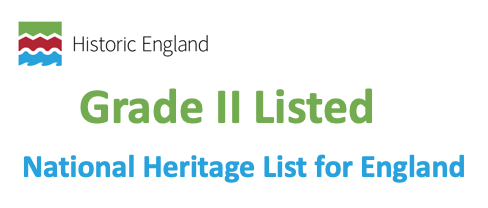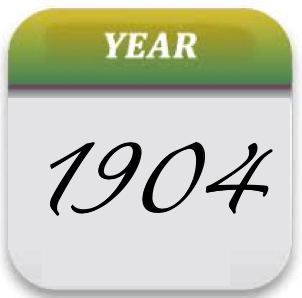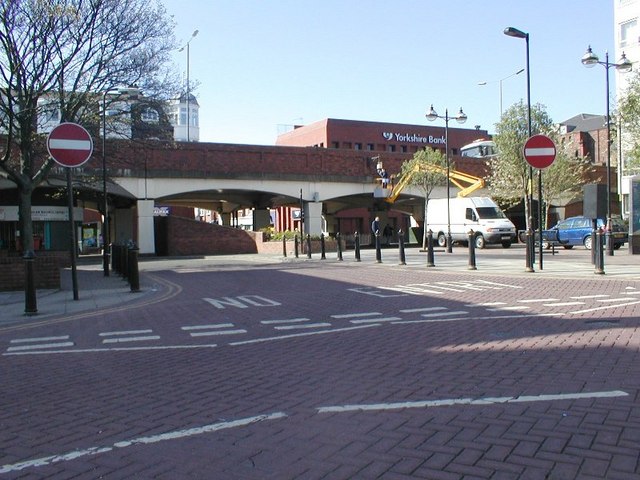Topics > Museums, Archives, Galleries and Collections > Dorman Museum
Dorman Museum
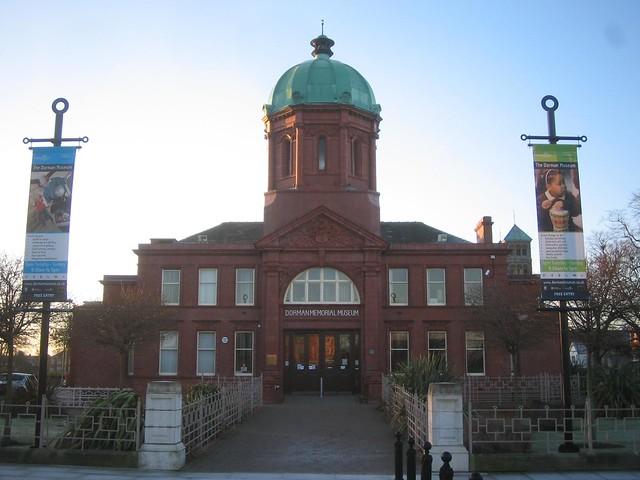 "The museum was officially opened on the 1st of July 1904, by the Colonel in Chief of the Yorkshire Regiment, as the Dorman Memorial Museum. It was presented to the town by Sir Arthur Dorman as a memorial to his son George Lockwood Dorman, and others of the Yorkshire Regiment who lost their lives during the South African wars of 1899-1902. The Dorman Museum is built of red brick and terracotta with an ornamental copper domed tower, which has become one of Middlesbrough’s landmarks. J.Mitchell Bottomley, Son and Welford were the architects commissioned to design the purpose built museum. Although the museum was opened in 1904 it’s history actually dates back to the late 1860’s when members of the Cleveland Literary and Philosophical Society Field Club gave various objects and specimens to create a museum at their premises on Corporation Road. H.W.F. Bolckow, one of the founders of Middlesbrough’s iron and steel industry, was the first to contribute to the collection with the purchase of a number of birds in 1874." (Dorman Museum). The museum building is Grade 2 Listed.
"The museum was officially opened on the 1st of July 1904, by the Colonel in Chief of the Yorkshire Regiment, as the Dorman Memorial Museum. It was presented to the town by Sir Arthur Dorman as a memorial to his son George Lockwood Dorman, and others of the Yorkshire Regiment who lost their lives during the South African wars of 1899-1902. The Dorman Museum is built of red brick and terracotta with an ornamental copper domed tower, which has become one of Middlesbrough’s landmarks. J.Mitchell Bottomley, Son and Welford were the architects commissioned to design the purpose built museum. Although the museum was opened in 1904 it’s history actually dates back to the late 1860’s when members of the Cleveland Literary and Philosophical Society Field Club gave various objects and specimens to create a museum at their premises on Corporation Road. H.W.F. Bolckow, one of the founders of Middlesbrough’s iron and steel industry, was the first to contribute to the collection with the purchase of a number of birds in 1874." (Dorman Museum). The museum building is Grade 2 Listed.
Dorman Museum is a local and social history museum located in Linthorpe within the borough of Middlesbrough and the ceremonial county of North Yorkshire, England. From its official opening on 1 July 1904 initial thematical leanings were towards the natural sciences, although galleries of the local Linthorpe Pottery, work by eminent Victorian industrial designer Christopher Dresser and the history of Middlesbrough, have largely replaced this emphasis. The remains of the original Victorian/Edwardian collection of stuffed and mounted animals is now in a single room, the Nelson Room, and consists of various taxidermied birds in their original cases with painted decorative backgrounds, and a variety of birds' eggs.
The museum was founded by Sir Arthur Dorman of the Dorman Long engineering company in honour of his son George Lockwood Dorman, who died of enteric fever at Kroonstad in the Second Boer War.
It is one of two cultural institutions run by Middlesbrough Borough Council along with the Captain Cook Birthplace Museum. Having undergone major refurbishment and extension it reopened in 2003 and is home to a wide variety of collections.
Visiting the museum
The Dorman Museum is a free venue, however there may be small charges applied for special events and activities. Opening times are Tuesday to Sunday 9:30 am to 4:30 pm.
The Dorman Museum has 8 permanent display galleries and a changing temporary exhibition spaces on the ground floor. Small exhibitions also take place within the ground floor corridor. Access to the upper floor is by the main staircase or lift.
The museum also benefits from a Victorian style tearoom on the ground floor, named Dresser's Tea Room, which serves sandwiches, cakes, hot and cold drinks, and afternoon tea.
Original collection
The original collection included items such as a stuffed and mounted eagle owl in the act of taking a hare, a stuffed lion in a "rampant" pose, and many birds' eggs, butterflies, and insects preserved under glass and in drawers, with covers over the glass to avoid the effects of light on the specimens. One particular specimen case could shock the unwary, as it contained a model, at least 100 times normal size, of a human head louse. At about the same time, the museum possessed a fossil of an ichthyosaur. There was also a stuffed ribbonfish, of a species a few metres in length.
One of the first contributors to the museum was Henry Bolckow, founder of Middlesbrough's largest ironworks, Bolckow Vaughan, who paid for some stuffed birds in 1874.
Christopher Dresser
Christopher Dresser was a pivotal figure in the Aesthetic Movement and deeply involved in the Linthorpe Art Pottery, which stood less than a mile from Dorman Museum. The museum has a significant Dresser collection and a Heritage Lottery Fund project exists to draw attention to this.
In 2014, the newly refurbished gallery dedicated to Christopher Dresser opened, showcasing 160 works produced directly from his designs, as well as those produced by others influenced by his work, and the collection continues to be extended. The extensive collection was purchased from a private collector with the financial support of Heritage Lottery Fund, Art Fund and Victoria and Albert Museum Purchase Grant Fund, bringing a significant collection into the public domain and safeguarding it for future generations. The Linthorpe Art Pottery gallery also reopened after extensive work and now showcases the largest public collection of Linthorpe wares in the world.
The museum also runs an education and activity programme relating to the Dresser and Linthorpe collections.
Other artefacts
A popular seasonal item in the 1960s was a beehive in an acrylic glass case with an exit through a side window, allowing visitors to the museum to see the bees at work in the hive.
The Dorman Museum has material including a library of archaeological journals and photographs taken by Frank Elgee during his excavations. Principally at The Bronze Age Hill fort at Eston Nab and burial grounds at Loose Howe, also, a dug-out canoe recovered from the River Tees at a depth of eight feet in 1926 is on view at the museum. A green plaque dedicated to Frank Elgee, the curator between 1923 and 1932, is on view at the entrance.
Replicas of the Roseberry Topping hoard are located in the Dorman Museum.
At the corner of Vulcan Street and Dock Street, buildings stood in the mid-19th century directly facing on to the river bank which is now perhaps 100 m away across land reclaimed from waste slag created by Bolchow and Vaughan Ironworks, the first on Middlesbrough. The first building (up to the double gates) was original a sail loft for servicing the sailing vessels coming into the docks. Prior to demolition a hoist was discovered in the roof space which would have been used to lift the sails from ground to first floor level where large windows provided plenty of natural light. The hoist has now been removed to Dorman Museum.
Archive and Ephemera - The museum has archived materials related to the wider collections. The ephemera collection is based on the history of Middlesbrough and is wide ranging, consisting of commercial printed materials such as posters, invoices, letter-heads, and newspaper cuttings relating to Middlesbrough events and people.
Botanical Collections - Mounted herbarium specimens: herbarium of Margaret Stovin assembled between 1798 and 1850. Comprises two major sections – British wild species (20 volumes) and planted exotics (10 volumes). The Rob, Hill and Chisholm collections amounting to some 29 wallets of material. Thomas 2 volume collection of British grasses.
Coins & Medals - 1,900 items including commemorative medallions, badges and banknotes as well as coins and military medals. Collections include the Yearby hoard of sixteenth and seventeenth century coins, the Thorpe Thewles hoard of Henry II and Henry III silver pennies and the Middridge hoard of Edward I coins.
Costumes & Textiles - 2,400 items of women’s fashions from the 20th century including shoes, hats and accessories. There is also a small collection of uniforms, including military, childrenswear, under garments, sportswear and men’s suits, and an additional collection of 130 items, mostly Victorian.
Decorative Arts - 340 items, mostly consisting of pieces from the Middlesbrough Pottery with some examples from other regional potteries and glass manufacturers. There is a small collection of pieces from the Bretby and Ault potteries because of their connections with the Linthorpe Pottery. There is also a collection of nineteenth century Japanese figures or okimono, possibly carved from walrus ivory.
Geological Collection - Fossils, and Geological Collection - Rocks & Minerals.
Photographs - This collection consists of about 3,500 prints, glass negatives and carte-de-visit, plus 2,190 lantern slides.
Social History Collection - There are approximately 16,000 objects in the social history collections. The museum started to collect everyday objects in the 1930s, recognising that society was rapidly changing and old ways of life disappearing.
World Cultures - The museum’s collection of around 1,500 artefacts from different world cultures has its origins in the colonial era. Sir Alfred Pease, in addition to his hunting trophies, also gave a collection of beadwork from NE Africa. George Lockwood Dorman within his brief life had managed to collect ethnographical items from various parts of the world, including Australia, New Zealand, Oceania and South Africa when he was stationed there during the Boer War. These items formed an important part of the museum’s founding collections.
Zoological Collections - The museum’s zoological collections still represent the major part of its holdings, numbering in excess of 150,000 specimens. The bulk of the collections are made up of invertebrates, especially molluscs and insects.
Permanent display galleries
20th Century Woman - Examining the major social and political changes of the last century and how they have shaped the lives of women in Middlesbrough.
Earth in Space - A look at how our planet has become and continues to be affected by cosmic, geological and biological forces.
Four Corners - The origins of the museum’s collections and the persons behind the objects. Natural sciences, ethnography and archaeology are shown together according to their countries of origin.
H20 - A stimulating discovery space based around the theme of water with lots to handle and explore.
Linthorpe Art Pottery - A small pottery in late 19th century Middlesbrough produced some of the most collectible art pottery, which became so popular that even Princess Alexandra purchased a turquoise Linthorpe Art Pottery vase. Much of the output was designed or influenced by Christopher Dresser and in its short 10 year life the pottery produced over 2000 different mould shapes, as well as winning two bronze medals and one gold medal at several national and international exhibitions.
The Nelson Room - A 19th century collection of mounted birds and eggs amassed by renowned local ornithologist Thomas Hudson Nelson who wrote the 'Birds of Yorkshire', and has been maintained in its original Edwardian setting since it was bequeathed by Nelson's wife in 1918.
Town in Time - The town of Middlesbrough was granted a charter in 1853 but its history stretches back thousands of years. Town in Time features two galleries crammed with artefacts and stories about the town and its people.
Lordship of Acklam Plan - Hanging in the double height space of the new Dorman Museum extension is a remarkable and unique historic plan. Measuring around 13 feet square this plan, painted on sailcloth, shows the extent and detail of the Lordship of Acklam Estates.
Learning overview
Dedicated education staff deliver curriculum based sessions for schools and workshops for groups of all ages (including pre-school) and abilities (special needs and gifted & talented), as well as lecture programmes, family activities and events.
Visit the page: Dorman Museum for references and further details. You can contribute to this article on Wikipedia.

from http://www.dormanmuseum.co.uk/
Dorman Museum
- "The Dorman Museum forms part of Middlesbrough Council's 'Museums Service' along with its sister venue - the Captain Cook Birthplace Museum, situated in Stewart Park.
The Dorman Museum houses a …
Added by
Pat Thomson
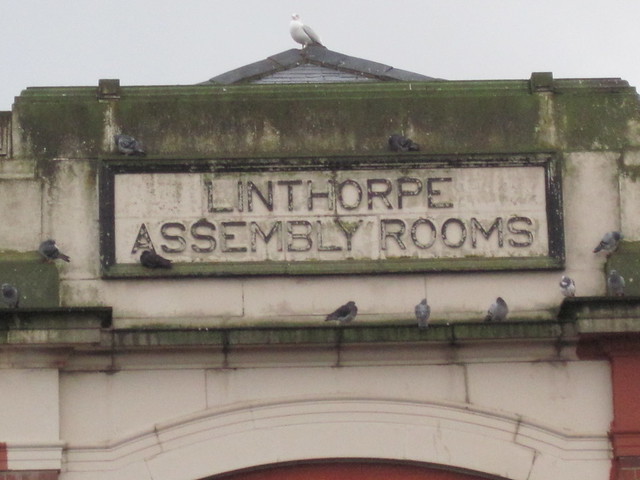
Co-Curate Page
Linthorpe
- Summary History Map Linthorpe is a suburb of Middlesbrough. Originally it was a small rural hamlet, but became part of Middlesbrough, as the town grew rapidly in the late 19th …
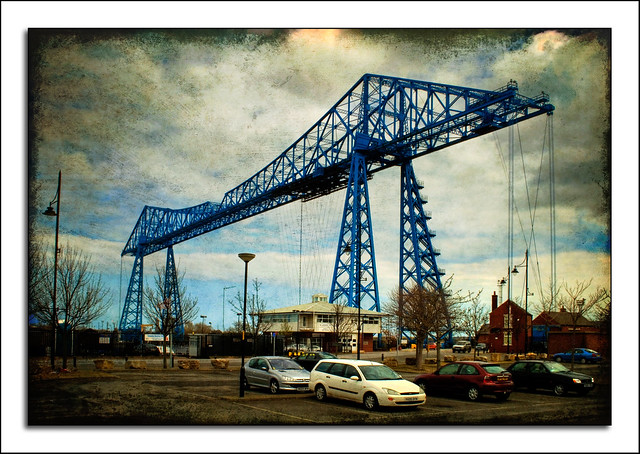
Co-Curate Page
Middlesbrough
- Overview Landmarks & Places to Visit History Timeline People "Middlesbrough is an almost unparalleled example of rapid growth...It dates from 1829, when its site was occupied by a solitary farmhouse, …
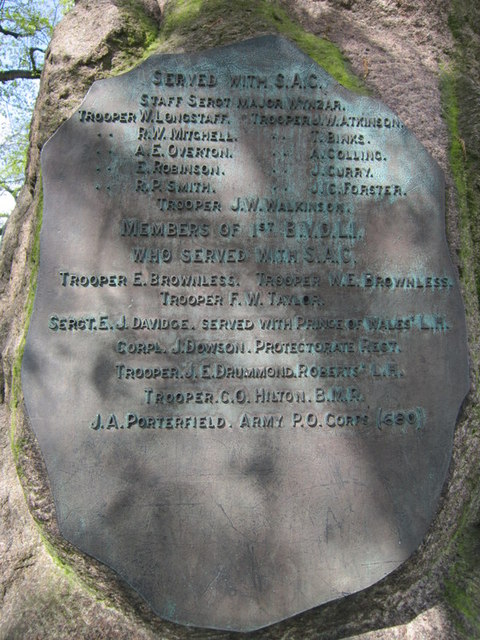
Co-Curate Page
Second Boer War (1899-1902)
- Overview About the Second Boer War The Second Boer War was fought from 11the October 1899 until 31 May 1902 by the Britain against the Transvaal Republic and the Orange Free …

from https://historicengland.org.u…
DORMAN MEMORIAL MUSEUM - List Entry
- "3/60 Dorman Memorial Museum. G.V. II. Museum, 1901/04 by J.M. Bottomley, Son and Welford (Leeds and Middlesbrough). Smooth red brick with terracotta dressings and rusticated quoins. Welsh slate roofs; felt …
Added by
Simon Cotterill


from http://www.dormanmuseum.co.uk/
Dorman Museum
- "The Dorman Museum forms part of Middlesbrough Council's 'Museums Service' along with its sister venue - the Captain Cook Birthplace Museum, situated in Stewart Park.
The Dorman Museum houses a …
Added by
Pat Thomson

Co-Curate Page
Linthorpe
- Summary History Map Linthorpe is a suburb of Middlesbrough. Originally it was a small rural hamlet, but became part of Middlesbrough, as the town grew rapidly in the late 19th …

Co-Curate Page
Middlesbrough
- Overview Landmarks & Places to Visit History Timeline People "Middlesbrough is an almost unparalleled example of rapid growth...It dates from 1829, when its site was occupied by a solitary farmhouse, …

Co-Curate Page
Second Boer War (1899-1902)
- Overview About the Second Boer War The Second Boer War was fought from 11the October 1899 until 31 May 1902 by the Britain against the Transvaal Republic and the Orange Free …

from https://historicengland.org.u…
DORMAN MEMORIAL MUSEUM - List Entry
- "3/60 Dorman Memorial Museum. G.V. II. Museum, 1901/04 by J.M. Bottomley, Son and Welford (Leeds and Middlesbrough). Smooth red brick with terracotta dressings and rusticated quoins. Welsh slate roofs; felt …
Added by
Simon Cotterill
List grade: 2
Wikipedia: Dorman Museum
Grid ref: NZ4918719060
District: Tees Valley
Post code: TS5 6LA
